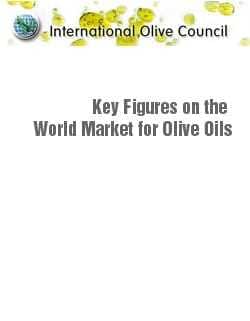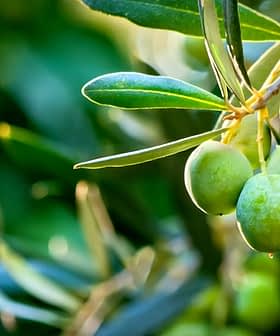By Julie Butler
Olive Oil Times Contributor | Reporting from Barcelona
World olive oil consumption is expected to slightly exceed production — by about 30,000 tons — in the 2010-11 crop year, which Spanish producers hope spells higher prices for them.
In its latest estimates, the International Olive Council predicts that international consumption will rise 3.6%, to 2.97 million tons. Meanwhile, production will drop 2.5 percent, to 2.94 million tons.
The biggest user of olive oil, the EU, is anticipated to consume 1.8 million tons in 2010-11, up 2.7 % on the provisional figures for 2009-10. The US is forecast to
remain the second highest, with consumption expected to rise just 0.7%, to 260,000 tons.
According to the IOC’s EU estimates, olive oil production in world leader Spain will fall from nearly 1.4 million tons (2009 – 10 provisional figures), to just under 1.2 million tons in 2010-11, a decrease of about 14%. In contrast, production in Italy, the world’s second largest producer, is expected to increase by 4.3% next season, to 480,000 tons, and Greece is tipped to rise 5%, to 336,000 tons.
Among non-EU countries forecast to increase production are Syria, to 193,500 tons (up 29%), Algeria, 48,000 tons (up 81%) and Israel, 9,000 tons (a hefty 157% jump). After slumping to just 5,500 tons in 2009-10, Palestine is expected to more than quadruple that production to 24,000 tons.
 Countries facing decreased production include Morocco, 150,000 tons (down 6.2%) and Tunisia, 120,000 tons (down 20%).
Countries facing decreased production include Morocco, 150,000 tons (down 6.2%) and Tunisia, 120,000 tons (down 20%).
Commenting on the IOC’s expectation of a decrease in Spain’s production the next year, the Spanish Association of Olive Municipalities (AEMO) said in a statement that it augured well for an increase in the farm-gate price of olive oil. “Which would be a relief for olive growers after two years of losses.”
The figures were released by the IOC at its 98th session of the Council of Members, held in Madrid from November 22 – 26. They included the final balances for the 2008-09 crop year, in which global olive oil consumption, 2.8 million tons, exceeded production by 162,000 tons.
Also discussed at the meeting were the IOC olive products promotional campaigns in China and Russia and an upcoming campaign in the United States and Canada, the priority ranking for market research in Japan, South Korea and Australia in 2011, and IOC work on standards for trade in olive products.
The meeting approved a revision of the trade standard for olive oils and olive-pomace oils, and the adoption of new and revised test methods, including the use of capillary column gas chromatography for the determination of the composition and content of sterols and triterpene dialcohols.
The Executive Secretariat was instructed to draw up the terms of reference for an olive propagation techniques project application and to provide an evaluation of the world olive germplasm collection in Marrakesh, Morocco.
The Council also decided to include Albania, Argentina, Montenegro and Turkey in RESGEN, a project aimed at identifying, describing and conserving olive genetic resources and now covering 17 countries, and previewed a revamp of the IOC website due to go live in January 2011.
.






